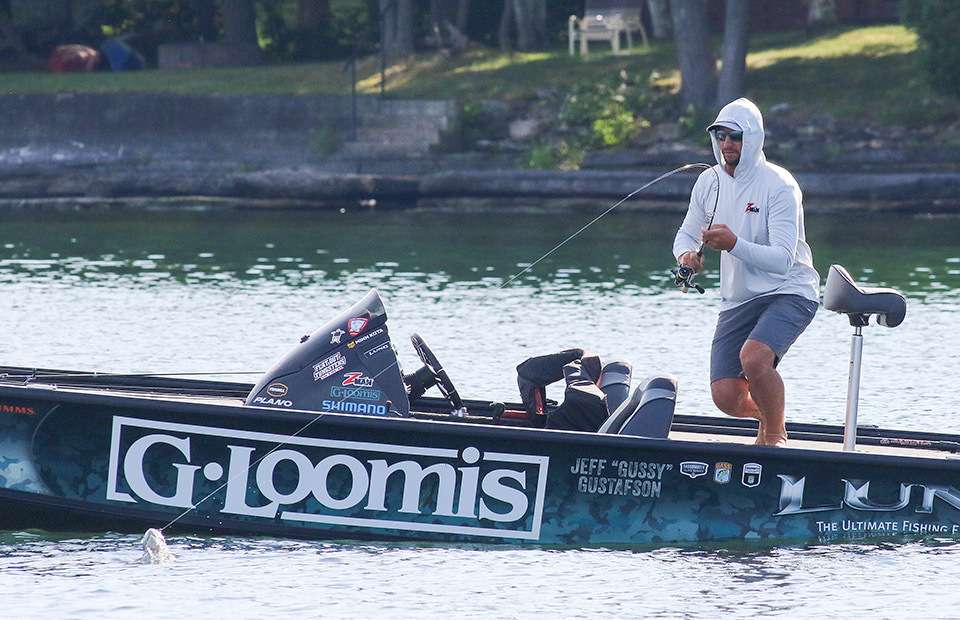
When I am not on the road fishing the Bassmaster Elite Series, my side job is guiding anglers on Lake of the Woods, mostly for smallmouth and walleye. I take people fishing who have a wide range of abilities, and most often we’re using spinning rods spooled up with braided line.
I have used braid on my spinning reels for the past 15 years, and under no circumstance would I spool up these reels with any other type of line. For my entire fishing career I have used regular Power Pro braid. It’s been around for a long time and is proven strong and reliable.
There are so many advantages to using braid on your spinning reels, the most obvious being the sensitivity because it has zero stretch. It also has a resistance to twisting and a much longer life span than other lines. When I take people fishing who are inexperienced, they can feel when a fish bites, something they might have trouble with if they were using monofilament or fluorocarbon. Beginner anglers sometimes don’t have the best hookset so this line helps with that as well.
When I’m fishing in deeper water, which is my preference when out on the Elite Series, I can feel bites and get a good hookset with ease. I can make longer casts because the braid doesn’t carry any memory so it won’t coil up like the other lines. If you look at my spinning outfits, you’ll notice that I usually have yellow-colored braid on my reels. I like it because it’s easy to see, so I can watch my line for bites, I know when my bait hits the bottom, and it just helps me have more control over the bait, knowing where the line is.
While braided line does cost more, it is more economical in the long run because it lasts so much longer. I sometimes have the same spool of line on a reel for the entire season. For the average angler you can expect to get a season or two out of a spool — it’s worth the investment.
If you do go with braided line, it’s important to tie on a fluorocarbon leader for a number of reasons. Fluorocarbon is more durable and won’t get damaged from contact with rocks. It also provides a little bit of stretch which helps with not pulling the bait out of the fish’s mouth. You are also able to break snags off with a fluorocarbon connection.
Braid is so strong that when tied directly, it can be hard to break off a snagged jig, and it can damage your rod or reel. Finally, you get an invisible link to the fish, which is important in clear water situations. I tie my leaders on using an FG knot. It’s an advanced knot that I still have trouble tying some days, but it’s strong and reliable when tied correctly. For beginner anglers, the blood knot is an easy one to learn, and the Albright knot is a better one that is slightly more complicated to tie.
When using braided line, you should consider using a longer, softer rod, which helps with longer casts and some absorption when fighting fish. I’m living with a G. Loomis 901 or 902 (7-foot, 6-inch) NRX spinning rod in my hands to get through this Northern swing we’re currently on at the St. Lawrence River and Lake Champlain.
Give braid a try on your spinning reels. You’ll thank me later.





